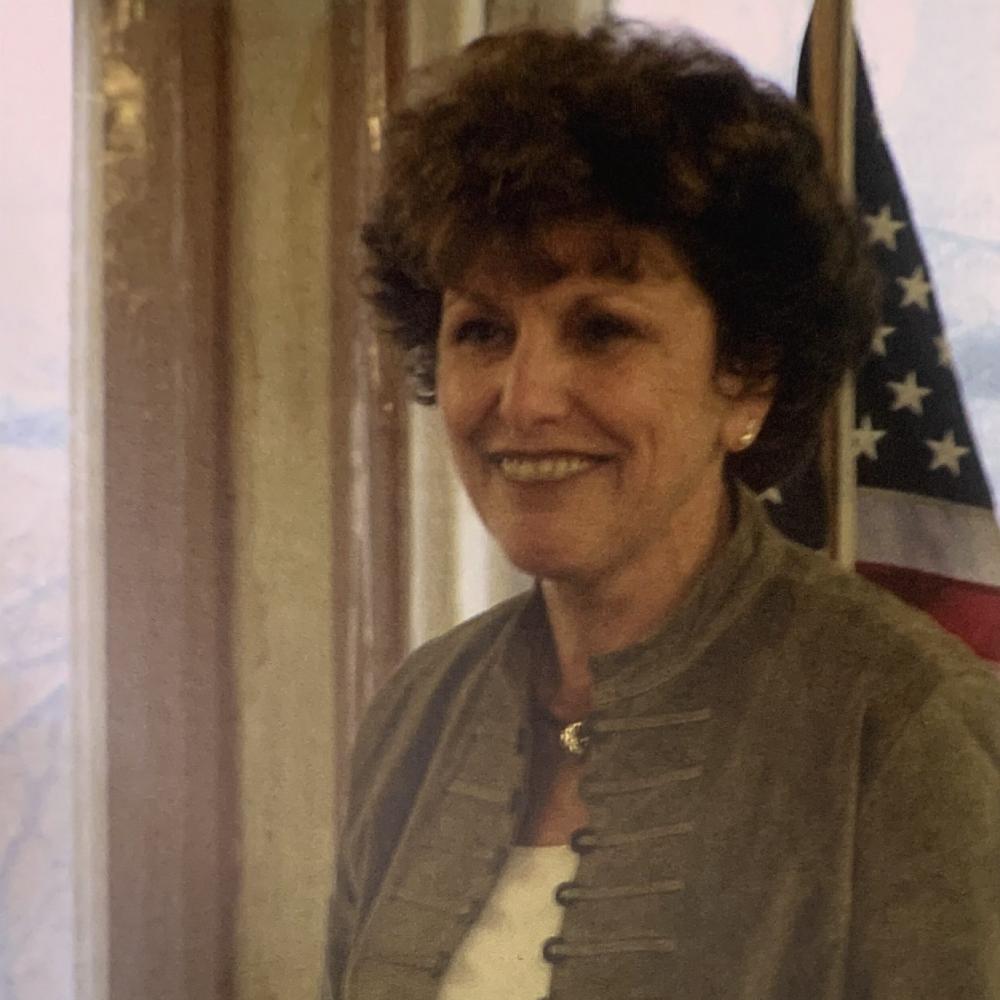Jan Fedewa’s interest in stories and storytelling goes back to her childhood, growing up on a farm in Kansas and hearing her grandmother’s tales of Fedewa’s great-grandparents.
“They met on a steamboat,” Fedewa explains. “He was Austrian, she was Czechoslovakian—that would have been Bohemian in those days. He was a cook on the steamboat. It would come into Detroit and ports in Canada, and she lived in Canada.” After the two married, they moved into a former Pony Express station in Kansas before getting their own farm.
Fedewa, who came to Michigan as a student at Davenport University, has worked in the state ever since. For most of that time, she has had a connection to the Michigan Humanities Council—first as a public information officer at the Michigan Department of Commerce, and since 1997 on the council staff itself. Today, she is its executive director. She says that the council’s tagline, “Michigan People, Michigan Places—Our Stories, Our Lives,” reflects the central role of stories in programs that it funds.
“The heart of humanities is story,” she says. Stories “help all of us in future generations to gain a better understanding of the past, to give meaning to the present, and to shape the future.” There are many kinds of storytelling, she adds. Presenters and performers in the Arts and Humanities Touring Program, for example, tell their stories through performance and interpretation.
Fedewa points with pride to Davenport’s recent creation of a council-funded touring exhibition on Viola Liuzzo. A white housewife from Michigan, Liuzzo was a civil rights volunteer who went to Alabama for a week in 1965 to help with voter registration. She was driving to a meeting when she was shot to death by members of the Ku Klux Klan. Her story, says Fedewa, helps Michigan residents connect to civil rights history in a more immediate, personal way.
A modern twist on storytelling came with a 2005 project sponsored by the Arab American National Museum in Dearborn. Under the guidance of local humanities professors, eighteen- to twenty-two-year-old Arab-American women interviewed other women in their community, learning about the women’s experiences of war and how they came to be in the United States. “They captured their stories with oral histories,” Fedewa says, noting that the project led to the exhibition entitled, “In Times of War: Her Untold Story.” Michigan, she explains, has the largest Arab-American population in the nation, and “this is a part of our Michigan experience, too.”
In Project Roots, also funded by the council, storytelling and self-expression are used to reach out to incarcerated youth. In sessions that last for several weeks, participants learn the history of American blues and country music, work with professional musicians, write their own lyrics, and put on a concert. One blues number produced by participants, “Eddie’s Choice,” describes a recently released man. As Eddie waits for a car to pick him up, an old man tries to convince him not to go back to his former ways. The song ends with the outcome still in doubt: “Eddie’s ride pulls up, and he starts to walk away, / But with his hand on that car door / He stops and looks the old man’s way.”
For the young men in Project Roots, writing songs related to their own experiences “gives them freedom to create and write,” Fedewa says. “Many of them have never had the opportunity to share their stories, to be creative.”
Looking ahead, Fedewa sees the sharing of stories on an even grander scale. The Great Michigan Read, which will be launched this July, will encourage the entire state to read and talk about one book that relates to Michigan—in effect to share one story.


